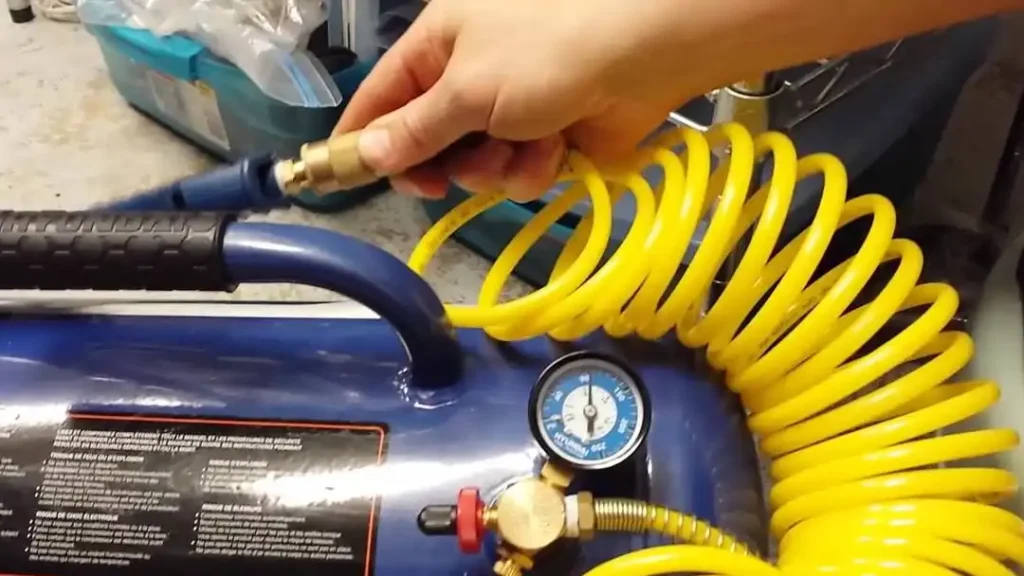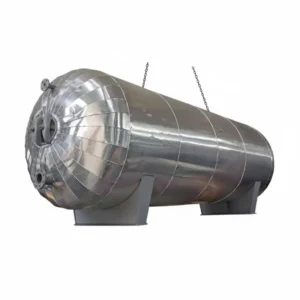Compressed air tanks are essential tools in a wide range of industries, from automotive repair to construction and beyond. These versatile vessels allow for the storage and distribution of compressed air, enabling a variety of pneumatic tools and equipment to function effectively. However, properly filling and maintaining a compressed air tank is crucial for ensuring safety and optimal performance.
In this comprehensive guide, we will walk you through the process of filling a compressed air tank, covering essential safety considerations, step-by-step instructions, and best practices for maintenance and troubleshooting.
What Is Compressed Air Tank
A compressed air tank is a strong vessel designed to store compressed air at high pressure. They are typically made of durable steel or aluminum and come in various sizes, depending on the application.
Types of Compressed Air Tanks
Compressed air tanks come in a variety of sizes, shapes, and materials, each designed to meet specific needs and applications. Some of the most common types of compressed air tanks include:
- Steel Tanks: These are the most widely used compressed air tanks, known for their durability and strength. They are often used in industrial and commercial settings.
- Aluminum Tanks: Lightweight and corrosion-resistant, aluminum tanks are popular in applications where portability is a priority, such as in automotive workshops or construction sites.
- Composite Tanks: Composite tanks, made from materials like carbon fiber or fiberglass, offer high strength-to-weight ratios and are commonly used in high-pressure applications.
Safety Considerations
Filling a compressed air tank requires utmost care and attention to safety. Some key considerations include:
- Pressure Ratings: Ensure that the tank’s maximum pressure rating is compatible with the compressor you are using. Overfilling can lead to catastrophic failure.
- Inspection and Certification: Regularly inspect the tank for any signs of damage or corrosion, and ensure that it is properly certified for use.
- Personal Protective Equipment (PPE): Always wear appropriate PPE, such as safety glasses, gloves, and a face shield, when filling and handling compressed air tanks.
- Ventilation: Ensure that the area where you are filling the tank is well-ventilated to prevent the buildup of potentially hazardous gases.
Selecting the Appropriate Compressor
The compressor you choose to fill your compressed air tank must be compatible with the tank’s pressure rating and capacity. Consider factors such as the tank’s maximum pressure, the compressor’s output pressure, and the compressor’s flow rate (CFM) to ensure a safe and efficient filling process.
Gathering the Necessary Equipment
In addition to the compressor, you will need the following equipment to fill a compressed air tank:
- Air Hose: Ensure that the air hose is rated for the maximum pressure of the tank and the compressor.
- Pressure Gauge: Use a reliable pressure gauge to monitor the tank’s pressure during the filling process.
- Regulator: A pressure regulator can help control the flow of air into the tank and prevent overfilling.
- Personal Protective Equipment (PPE): As mentioned earlier, wear safety glasses, gloves, and a face shield when handling compressed air tanks.
How to Fill Compressed Air Tank

Inspecting the Tank
Before filling the compressed air tank, perform a thorough inspection to ensure its safety and integrity. Check for any visible signs of damage, such as dents, cracks, or corrosion, and ensure that the tank’s certification is up-to-date.
Connecting the Compressor
- Position the compressor near the compressed air tank, ensuring that the area is well-ventilated.
- Attach the air hose to the compressor’s outlet port, and then connect the other end to the tank’s inlet valve.
- Ensure that all connections are secure and free of any leaks.
Filling the Tank
- Start the compressor and allow it to build up pressure.
- Slowly open the tank’s inlet valve to begin the filling process.
- Monitor the pressure gauge and adjust the compressor’s output as needed to maintain a safe and controlled fill rate.
Monitoring the Pressure
Continuously monitor the tank’s pressure during the filling process. Stop filling the tank when it reaches the desired pressure or the maximum rated pressure, whichever is lower.
Safely Disconnecting the Tank
- Once the tank is filled, shut off the compressor and allow the air hose to depressurize.
- Slowly open the tank’s outlet valve to release any remaining pressure.
- Disconnect the air hose from the tank’s inlet valve, being careful to avoid any sudden release of air.
Maintenance and Storage
Checking for Leaks
Regularly inspect the compressed air tank for any signs of leaks, such as hissing sounds or a drop in pressure over time. Use a soapy water solution to check for bubbles around fittings and valves.
Draining the Tank
Periodically drain the tank to remove any accumulated moisture or condensation, which can lead to corrosion and other issues.
Storing the Compressed Air Tank
When not in use, store the compressed air tank in a dry, well-ventilated area, away from any heat sources or direct sunlight. Ensure that the tank is properly secured to prevent it from tipping or falling.
Troubleshooting Common Issues
Pressure Fluctuations
Sudden or erratic pressure changes during the filling process may indicate a problem with the compressor or the tank itself. Check for any leaks in the system, and ensure that the compressor is operating within its recommended pressure and flow rate range.
Leaks and Damage
If you notice any leaks or signs of damage to the compressed air tank, such as cracks, dents, or corrosion, do not attempt to fill the tank. Instead, have the tank inspected and repaired by a qualified professional before using it again.
Conclusion
Filling a compressed air tank requires careful attention to safety, proper equipment selection, and a step-by-step process to ensure a successful and safe outcome. By following the guidelines outlined in this comprehensive guide, you can confidently fill your compressed air tank, maintain its condition, and troubleshoot any issues that may arise.
Remember, safety should always be the top priority when working with compressed air systems. Proper training, adherence to manufacturer recommendations, and a commitment to maintenance will help you get the most out of your compressed air tank while keeping yourself and those around you safe.manufacturer recommendations, and a commitment to maintenance will help you get the mos

